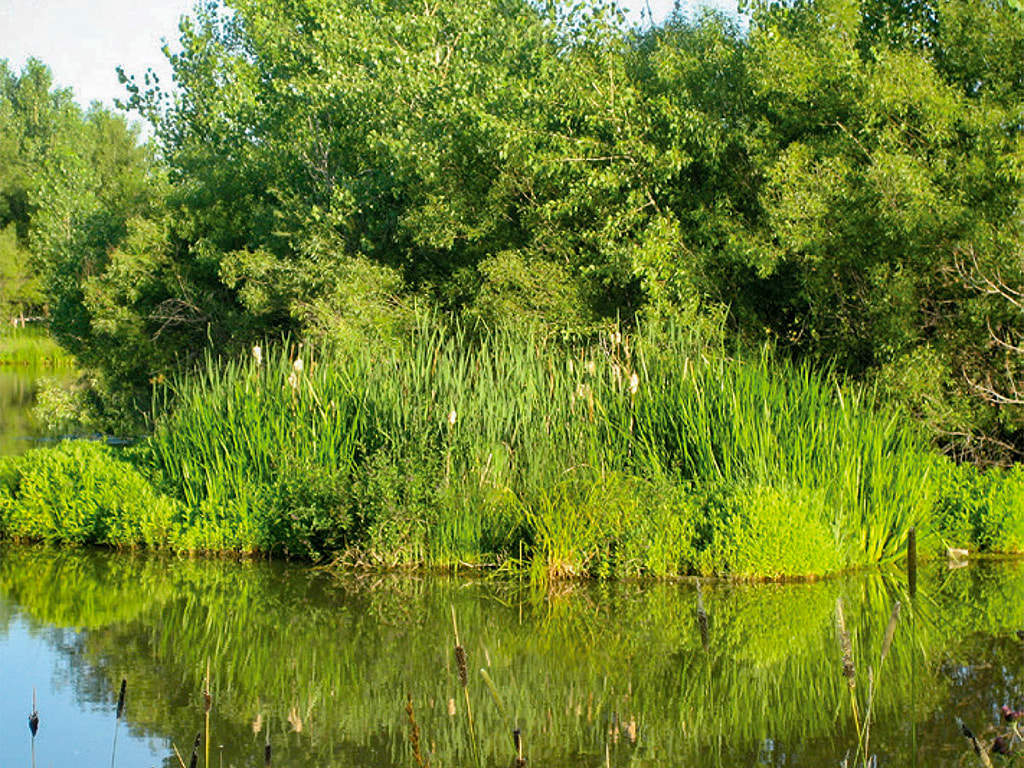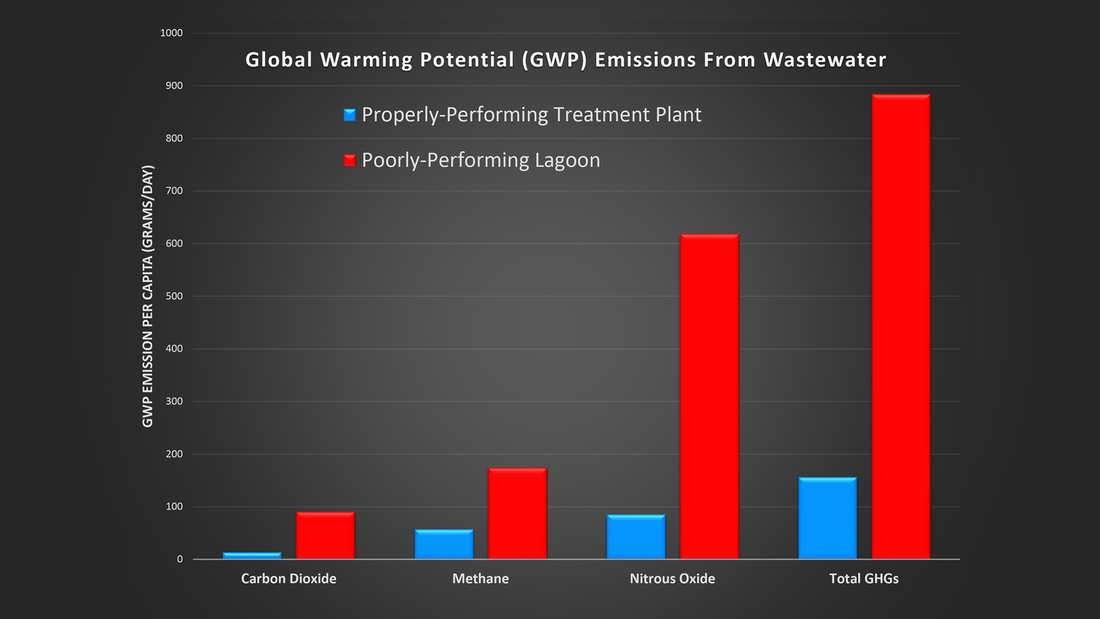If your waterway suffers from large volumes of algae, it is probably eutrophic. This means it is generating greenhouse gas emissions as the algae dies and breaks down. In the most extreme instances, potent greenhouse gases like methane and nitrous oxide occur. These up the ante.
BioHaven Floating Islands change this paradigm. They cycle the same nutrients that grow algae and cyanobacteria into more desirable, perennial biota.
These include native plants and trees, diatoms, invertebrates that are found in heathy wetlands, and fish.
Adding nutrients to water in the northern tier of the U.S., in the form of direct fertilization or even fish feed, is highly inappropriate. Our winter shutdown of nature’s wetland effect means that our water here in the north is extremely vulnerable to eutrophication. In fact, across the U.S., the incidence of eutrophication has tripled, since the Clean Water Act was passed in the early ‘70s.
However, if you manage water, including wastewater and stormwater, or ponds in a parkway, or private fish ponds, you can take a bite out of greenhouse gas generation. BioHavens will essentially double their dry weight biomass annually. Much of that humus buildup will be carbon that would otherwise have ultimately cycled into our atmosphere.
Greenhouse gas emissions reduction—as a by-product
So beyond the functionality of BioHavens as water quality enhancement tools, as water beautification assets, and even as revenue generators per our Water Resource Recovery initiative, greenhouse gas reduction represents another BioHaven by-product.
Adding nutrients to water in the northern tier of the U.S., in the form of direct fertilization or even fish feed, is highly inappropriate. Our winter shutdown of nature’s wetland effect means that our water here in the north is extremely vulnerable to eutrophication. In fact, across the U.S., the incidence of eutrophication has tripled, since the Clean Water Act was passed in the early ‘70s.
However, if you manage water, including wastewater and stormwater, or ponds in a parkway, or private fish ponds, you can take a bite out of greenhouse gas generation. BioHavens will essentially double their dry weight biomass annually. Much of that humus buildup will be carbon that would otherwise have ultimately cycled into our atmosphere.
Greenhouse gas emissions reduction—as a by-product
So beyond the functionality of BioHavens as water quality enhancement tools, as water beautification assets, and even as revenue generators per our Water Resource Recovery initiative, greenhouse gas reduction represents another BioHaven by-product.
BioHavens Fight Climate Change
What was once a little-known connection between greenhouse gas emissions and impaired lakes, has been once again confirmed by researchers: lakes devoid of oxygen produce methane. This happens when too many nutrients are present in the lake and all the oxygen is used up as they are digested. BioHavens cure this issue by removing nutrients before any oxygen depletion happens.
What was once a little-known connection between greenhouse gas emissions and impaired lakes, has been once again confirmed by researchers: lakes devoid of oxygen produce methane. This happens when too many nutrients are present in the lake and all the oxygen is used up as they are digested. BioHavens cure this issue by removing nutrients before any oxygen depletion happens.
Here are some articles on the subject:
https://phys.org/news/2019-09-cold-unexpected-greenhouse-gas-effect.html
https://www.cbc.ca/news/canada/calgary/abraham-lake-north-saskatchewan-river-methane-bubbles-frozen-ice-1.5424865
https://phys.org/news/2019-09-cold-unexpected-greenhouse-gas-effect.html
https://www.cbc.ca/news/canada/calgary/abraham-lake-north-saskatchewan-river-methane-bubbles-frozen-ice-1.5424865

